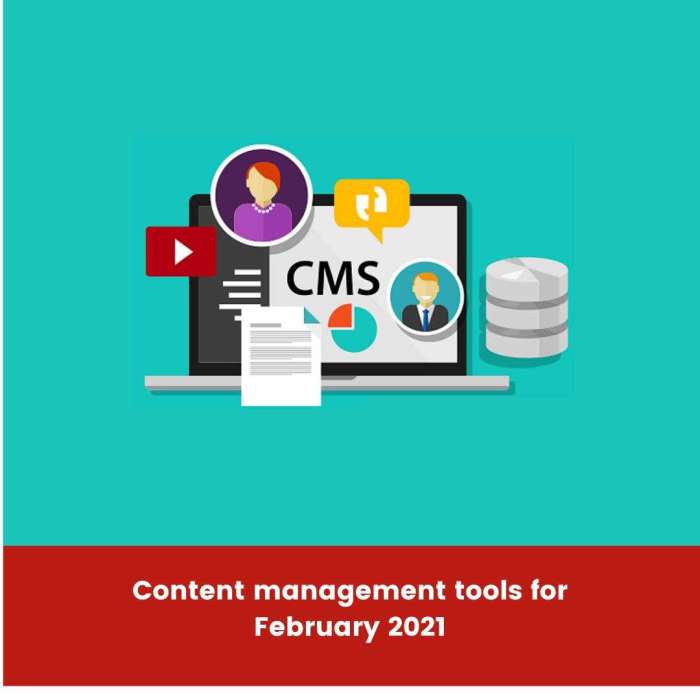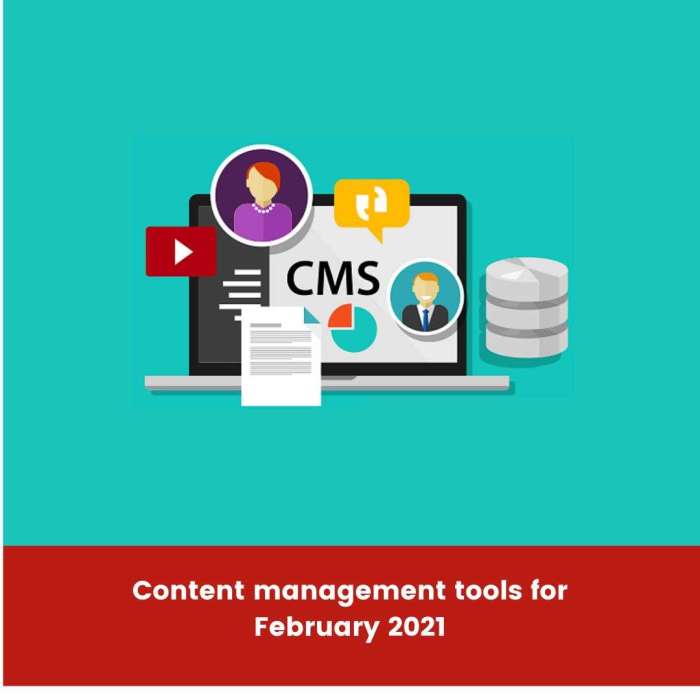Kicking off with Using Content Management Tools, this topic explores the ins and outs of managing digital content efficiently and effectively. From key features to best practices, this guide has it all.
Introduction to Content Management Tools: Using Content Management Tools
Content management tools are software applications designed to help individuals and organizations create, manage, and publish digital content. These tools play a crucial role in organizing and structuring content, making it easier to access and share information across different platforms.
Using content management tools is essential for businesses and individuals looking to streamline their content creation and distribution processes. By centralizing all content in one place, these tools help maintain consistency, version control, and collaboration among team members.
Popular Content Management Tools
- WordPress: A widely used open-source CMS that offers a user-friendly interface and a variety of plugins for customization.
- Drupal: Known for its flexibility and scalability, Drupal is a powerful CMS favored by large enterprises and government organizations.
- Joomla: Another popular open-source CMS that provides a balance between ease of use and customization options.
- Squarespace: Ideal for individuals and small businesses, Squarespace offers beautiful templates and integrated hosting services.
- Shopify: Designed specifically for e-commerce websites, Shopify is a robust platform that simplifies online store management.
Features of Content Management Tools
Content management tools come packed with a variety of features that make creating, editing, and publishing content a breeze. These tools are essential for businesses and individuals looking to streamline their content workflows and maintain consistency across their platforms.
Content Creation
- WYSIWYG Editor: Content management tools often come with a What You See Is What You Get editor, allowing users to create content without needing to know HTML or other coding languages.
- Templates: Users can choose from a selection of pre-designed templates to create visually appealing content quickly.
- Media Library: Tools typically include a media library for storing images, videos, and other multimedia elements to enhance content.
Content Editing
- Version Control: Content management tools offer version control features, allowing users to track changes, revert to previous versions, and collaborate effectively.
- Collaboration: Users can collaborate with team members in real-time, leaving comments, making edits, and approving content before publishing.
- Workflow Management: Tools often include workflow management capabilities to streamline the content creation process from drafting to approval.
Content Publishing
- Scheduling: Users can schedule content to be published at specific times, ensuring a consistent posting schedule.
- Optimization: Tools may offer optimization features to help improve the visibility of content on search engines.
- Multi-channel Publishing: Some tools support publishing content across multiple channels, such as websites, social media platforms, and email newsletters.
Benefits of Using Content Management Tools

Content management tools offer a multitude of benefits for businesses and individuals alike. These tools streamline workflows, improve productivity, and contribute to better organization and accessibility of content.
Increased Efficiency, Using Content Management Tools
- Content management tools automate tasks such as content creation, editing, and publishing, saving valuable time and effort.
- Centralized storage of content ensures easy access for team members, reducing the time spent searching for files.
Enhanced Collaboration
- Real-time collaboration features allow team members to work on projects simultaneously, fostering better communication and teamwork.
- Version control capabilities prevent confusion by ensuring that everyone is working on the most up-to-date content.
Improved Content Organization
- Content management tools categorize and tag content, making it easier to search for specific information and maintain a structured content hierarchy.
- Metadata and s help in organizing content effectively and improving searchability within the system.
Enhanced Security
- Content management tools offer secure access controls, ensuring that sensitive information is only accessible to authorized users.
- Regular backups and disaster recovery options protect valuable content from data loss or system failures.
Types of Content Managed by Content Management Tools

Content management tools are versatile platforms that can handle various types of content to help users organize and publish information efficiently. Let’s explore the different types of content that can be managed using these tools.
Text Content
Text content is one of the most common types managed by content management tools. These tools allow users to create, edit, and format textual information easily. Users can input written content, such as articles, blog posts, or website copy, and organize it within the tool’s interface.
Image Content
Images play a crucial role in engaging audiences, and content management tools enable users to upload, store, and manage image files seamlessly. Users can add images to their content, create galleries, and optimize images for web use directly within the tool.
Video Content
Video content is growing in popularity, and content management tools support the management of video files. Users can upload videos, embed them into their content, and even create video playlists for a more interactive user experience.
Multimedia Content
Apart from text, images, and videos, content management tools also support other multimedia formats like audio files, slideshows, and interactive elements. Users can integrate various multimedia components into their content to enhance engagement and deliver a more dynamic user experience.
Metadata Management
Metadata management is crucial in organizing content within these tools. Content management tools allow users to assign metadata tags, categories, and descriptions to their content, making it easier to search, filter, and retrieve specific information. Metadata plays a vital role in enhancing content discoverability and ensuring efficient content organization within the tool.
Best Practices for Utilizing Content Management Tools
Utilizing content management tools effectively is essential for businesses to streamline their content creation and management processes. By following best practices, organizations can ensure maximum efficiency and productivity in their content workflows. Here are some tips and strategies for utilizing content management tools to their fullest potential:
Maintaining Consistency and Quality
- Establish clear content guidelines: Create a style guide that Artikels tone, voice, formatting, and branding requirements to maintain consistency across all content.
- Use templates and workflows: Develop standardized templates and workflows for different types of content to ensure quality and consistency in every piece created.
- Implement approval processes: Set up approval workflows to ensure that all content meets the required standards before publication, minimizing errors and maintaining quality.
- Regularly review and update content: Conduct content audits to identify outdated or irrelevant content that needs to be updated or removed to maintain quality and relevance.
Integrating with Other Software
- Integrate with project management tools: Connect content management tools with project management software to streamline collaboration, task assignments, and deadlines for content creation.
- Sync with analytics platforms: Integrate content management tools with analytics platforms to track content performance, gather insights, and make data-driven decisions for content optimization.
- Automate content distribution: Utilize integrations with email marketing tools, social media platforms, and other distribution channels to automate content sharing and maximize reach.
- Enable cross-platform compatibility: Ensure that content management tools are compatible with various devices and platforms for seamless operations and accessibility.






